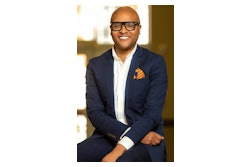That sound you are hearing in America are the calculative gears grinding away in the minds of high school seniors everywhere.
Oh, to where, to where shall I matriculate?
May 1st is the deadline date for students to decide which ivory tower suitor to accept. And the most newsworthy decision may be how many Asian Americans accept Harvard’s offer of admission.
You will recall, we are waiting for the Supreme Court to opine on the Students For Fair Admissions suit claiming Harvard’s use of race in admissions is discriminatory against Asian Americans.
Considering the 6-3 conservative court, everyone is expecting a decision that will end so-called “affirmative action” and the use of race in admissions for all.  Emil Guillermo
Emil Guillermo
Wouldn’t it be some sweet irony if that happens concurrently when a record number of Asian Americans are accepted into the new Harvard freshman class.
How then does one explain the illogical justice expected by the Supreme Court?
The court is expected to publicly denounce Harvard’s process—said to discriminate against Asians in the very year Asians have just become 30 percent of the freshman class.
It doesn’t make sense. Unless you think the class should have been 50 percent Asian.
Harvard was so good in admitting Asian Americans that now whatever it had been doing, they and everyone else must stop because the conservatives on the court think race should not be a factor in admissions.
What happens if the number of Asians go down? Will we need to reverse the anticipated SCOTUS decision, or just see it for the boneheaded opportunistic political ploy that it was?
Consider this: if Asian numbers go down, as well as Black and Latinx numbers, what else can we expect?
Why, of course, the declining White numbers reverse and start rising.
And then we’ll all see the ultimate goal of the anti-affirmative action moves by lawyers like Ed Blum and the careerists dedicated to reversing civil rights. The goal was always to protect whites and preserve white numbers in the era of America’s declining white population.
How is that done? You take affirmative action! Round up some Asian Americans who got rejected from Harvard, use them as white proxies, and sue, claiming discrimination.
It should be clear now that the lower courts got it right in rejecting the claim.
But with a stacked Supreme Court, conservatives are preparing for a victory.
And that would be a shame.
Admission Notices
When the admission e-mails went out, under Harvard’s current admissions policy, where race can legally be used as one factor of many, the school announced that of the 1,942 students admitted, 29.9 percent were Asians.
If you were one of those 580.65 people, congratulations.
Especially, that lucky .65 person.
However, if you were a rejected Asian and in the general pool of 56, 937 applicants, buck up and look on the bright side.
Consider that Donald Trump, the twice impeached former president who recently matriculated into the justice system as a criminal defendant, simply went to Fordham for two years, then Penn’s Wharton School for two. And look at the history he’s making. He’s No. 1, right?
The first-ever criminally indicted leader of the free world. He didn’t need Harvard, and neither did any of the rejected applicants.
Were they discriminated against? Not enough to file a new lawsuit. Or maybe Blum will take them on contingency when he’s looking for more aggrieved clients. I like to tell rejected applicants, they weren’t rejected as a human beings; they were simply told “no.” It’s a good lesson to learn the difference early in life. Unlike Trump who is just now learning it. And you might really some other school like UCLA better.
Actually, the current admissions process at Harvard has shown a remarkable effectiveness in admitting Asian Americans: 25.4 percent in 2019; 24.5 percent in 2020; 27.2 percent in 2021; 27.8 percent in 2022; 29.9 percent in 2023.
Should it really be higher—maybe as much as 40 percent, as some Asian parents say–based on “merit” like grades and test scores? But would that be equitable?
At 7 percent of the population, AAPIs are already exceeding expectations. And yet some in the community still want more and complain about discrimination.
One problem is that with the use of the so-called Common App to make college more accessible, the number of applications to Harvard has skyrocketed. This year’s 56,937 was just a tad off last year’s all-time high of 61,220 applicants. In 2021, the pool was 57,435.
This is the competition for the same 2,000 or so freshman class spaces, a number that has been consistent for more than 20 years.
The only thing that’s changed has been the enormous applicant pool.
In 2002, when the applicant pool was 19,605, the acceptance rate was 10.5 percent.
This year, with the applicant pool approaching 57,000, the acceptance rate was 3.41 percent, the second lowest in the school’s history.
When you have only 2,000 open spaces a year, there’s going to be some discrimination. But it’s not necessarily illegal or racist.
That’s the frustrating thing about the Asian Americans who are being used successfully by anti-affirmative action advocates as proxies to end the practice at Harvard and set a precedent for all of higher ed. Race has been the focus, but the more relevant issue is really resources.
There’s not enough Harvard to accommodate everyone.
Instead of a stupid lawsuit poised to set up even more roadblocks to racial equity in higher ed, maybe we should focus on making all schools the equal of the Ivies.
Then it wouldn’t matter where anyone goes if we could rely on the same standards of what makes up a great college experience.
As for now, everyone wants Harvard as if education is a Louis Vuitton bag. We should be asking how it got that way.
Emil Guillermo writes on AAPI affairs, race, diversity and media. He is a talk host, podcaster and former adjunct professor. He is at www.amok.com



















